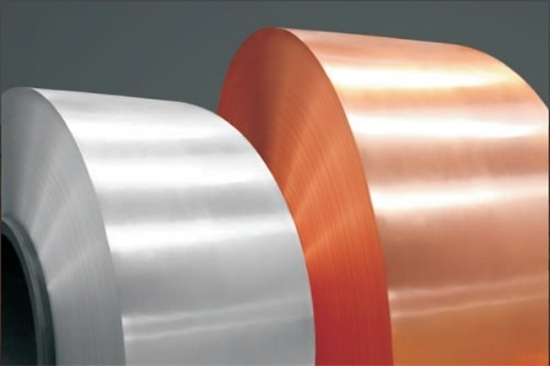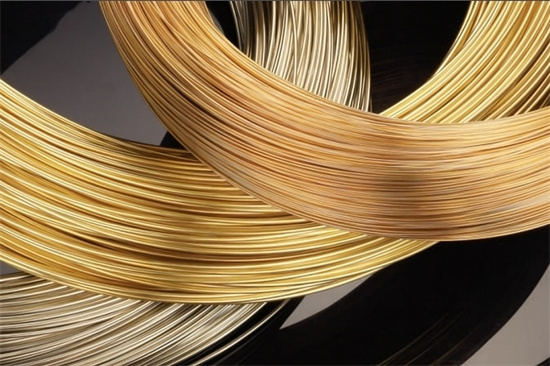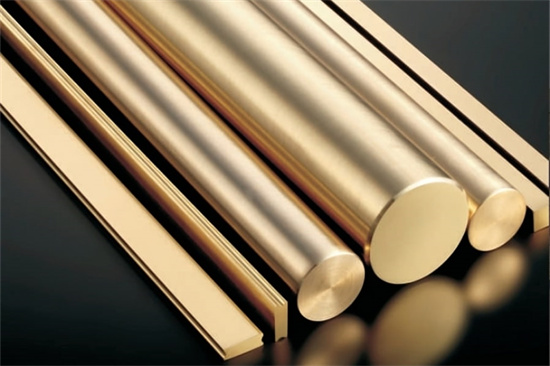


Aluminum Bronze: A Comprehensive Guide to Its Superior Properties
Low MOQ
Provide low minimum order quantity to meet different needs.
OEM & ODM
Provide customized products and design services to meet unique customer needs.
Adequate Stock
Ensure fast order processing and provide reliable and efficient service.
Customer Satisfaction
Provide high quality products with customer satisfaction at the core.
share this article
Table of Contents
Aluminum bronze is a fascinating and highly versatile alloy that has earned its place in countless industries due to its unique combination of properties. Whether you’re working in aerospace, marine, or heavy machinery, it’s likely that aluminum bronze plays a vital role in the components you use or manufacture. But what exactly makes this alloy so special? Why is it preferred in certain applications over other types of bronze or even steel?
In this deep dive, we’ll explore everything you need to know about aluminum bronze. From its composition and mechanical properties to its various applications and market pricing, this guide will provide a comprehensive understanding of the alloy. We aim to present the information in an engaging, conversational style, along with technical tables and data for easy reference.
Overview
Let’s start with an overview of what aluminum bronze is and why it’s such a popular choice across multiple industries.
What is Aluminum Bronze?
Aluminum bronze is a group of copper-based alloys that include aluminum as the primary alloying element. The aluminum content typically ranges from 5% to 11%, which gives the alloy its unique properties. Other elements such as iron, nickel, manganese, and silicon can also be added to further enhance its performance.
So, why do we care so much about aluminum bronze? It offers an impressive blend of corrosion resistance, high strength, and wear resistance, all while maintaining excellent machinability and thermal conductivity. It’s often favored in environments where both strength and resistance to harsh conditions are critical, such as in the marine, chemical, and aerospace industries.
Key Features :
- High strength and toughness
- Excellent corrosion resistance, especially in marine and chemical environments
- Good wear resistance and low friction coefficient
- Non-magnetic properties, making it ideal for certain sensitive applications
- Thermal and electrical conductivity, though lower than pure copper
Aluminum bronze is often compared to other types of bronze (like phosphor bronze or silicon bronze) and even steel alloys. What sets it apart is its corrosion resistance, particularly in environments where saltwater or chemical exposure is common. This makes it particularly useful in marine hardware, pumps, and valves, and even in aerospace applications where reliability and durability are paramount.
Composition and Properties
Understanding the composition of aluminum bronze is critical to understanding its performance. As mentioned earlier, aluminum is the primary alloying element, but other metals are often added to improve specific properties like strength, ductility, or corrosion resistance.
Typical Composition of Aluminum Bronze Alloys
| Alloy Type | Copper (Cu) | Aluminum (Al) | Iron (Fe) | Nickel (Ni) | Manganese (Mn) | Other Elements |
|---|---|---|---|---|---|---|
| C95200 | 91% | 8.5-9.5% | 0.1% | 0.2% | 0.1% | Trace elements |
| C95400 (most common) | 85% | 10-11.5% | 3.0-4.0% | 0.5% | 0.5% | Trace elements |
| C95500 | 80% | 10-11% | 3.0-5.0% | 4.0-5.0% | 0.5% | Trace elements |
| C95800 (marine grade) | 79-81% | 9-11% | 4.0-5.0% | 4.0-5.0% | 0.5% | Trace elements |
Note: The specific composition can vary slightly depending on the manufacturer and the intended application.
Mechanical Properties
The mechanical properties of aluminum bronze make it an excellent choice for high-stress, high-wear environments. Below is a breakdown of the typical mechanical properties of some common aluminum bronze alloys.
| Property | C95200 | C95400 | C95500 | C95800 (Marine Grade) |
|---|---|---|---|---|
| Tensile Strength (MPa) | 600-700 | 690-790 | 725-850 | 760-890 |
| Yield Strength (MPa) | 200-300 | 300-500 | 380-550 | 450-600 |
| Elongation at Break (%) | 12-15% | 10-13% | 6-10% | 6-10% |
| Brinell Hardness (HB) | 125-150 | 150-170 | 170-200 | 180-210 |
| Impact Strength (J) | 30-40 | 20-30 | 15-25 | 15-25 |
These properties reflect the toughness and wear resistance of aluminum bronze, making it a highly durable material that can withstand both high loads and abrasive conditions.
Key Characteristics
- Corrosion Resistance: Aluminum bronze forms a tough, adherent oxide layer (alumina) that protects it from further corrosion. This makes it highly resistant to saltwater and marine environments and gives it an edge over other non-ferrous alloys.
- Wear Resistance: Due to its hardness and toughness, aluminum bronze is often used in high-wear applications like bearings and bushings.
- Non-Sparking: Aluminum bronze is non-sparking, making it suitable for use in hazardous environments like oil rigs, mines, and chemical plants.
- Magnetic Properties: It is generally non-magnetic, which is essential for specialized applications, such as in electromagnetic equipment and sensitive instrumentation.
Applications
Now that we’ve got a good understanding of its composition and properties, let’s explore where aluminum bronze is most commonly used. Because of its strength, corrosion resistance, and wear properties, it has found a home in many demanding industries.
Common Applications
| Industry | Application |
|---|---|
| Marine | Propellers, impellers, pump housings, marine hardware, and valve components |
| Aerospace | Landing gear bearings, bushings, and aircraft control components |
| Oil & Gas | Non-sparking tools, valve stems, pump components, and oil rig equipment |
| Automotive | Bushings, bearings, engine components, and valves |
| Heavy Machinery | Bearing cages, gears, cam followers, and wear plates |
| Energy (Hydroelectric) | Turbine components, generator bushings, and hydraulic fittings |
| Chemical Processing | Valves, pumps, and fittings for corrosive chemicals |
| Architecture | Decorative elements, monuments, and sculptures |
Let’s take the marine industry as an example. Aluminum bronze’s corrosion resistance in saltwater environments makes it ideal for propeller shafts, pump housings, and valves. In fact, the C95800 alloy is specifically designed for use in marine applications, offering both high strength and excellent resistance to seawater.
Similarly, in aerospace, aluminum bronze is used in landing gear components and bushings, where both strength and wear resistance are critical. Its non-magnetic properties also make it suitable for use in sensitive electronic components.
Specifications, Sizes, and Standards
When selecting the right aluminum bronze for your project, it’s essential to understand the available specifications, sizes, and industry standards. Depending on the application, you may need aluminum bronze in a specific form, such as rods, sheets, or castings.
Available Forms and Sizes
| Form | Typical Sizes Available | Industry Standards |
|---|---|---|
| Round Bars | Diameter: 5 mm to 500 mm | ASTM B150, ASTM B171 |
| Sheets/Plates | Thickness: 0.5 mm to 100 mm | ASTM B169, EN 1982 |
| Rods | Diameter: 10 mm to 100 mm | ASTM B505, ASTM B271 |
| Tubes | Outer Diameter: 10 mm to 300 mm | ASTM B150, EN 12420 |
| Castings | Custom sizes based on customer requirements | ASTM B148, ASTM B763 |
These standards ensure that the material meets the required mechanical and chemical properties for specific industries.
Grades and Standards
Several grades of aluminum bronze are used across industries, each with its specific set of properties and standards.
| Grade | Standard | Primary Use |
|---|---|---|
| C95400 | ASTM B505, B271 | General-purpose use, including bushings, gears, and wear plates |
| C95500 | ASTM B148, B763 | High-strength applications, including aerospace and heavy machinery |
| C95800 | ASTM B148 | Marine hardware, propellers, and pump components |
| C95200 | ASTM B150 | Low-friction applications, including bearings and bushings |
Understanding the grade and standard is critical when selecting the right aluminum bronze for your project. For example, if you’re working on a marine application, you’ll want to opt for C95800, which is specifically designed to withstand the harsh conditions of seawater.
Suppliers and Pricing
The pricing of aluminum bronze can vary significantly depending on the grade, form, and quantity you’re purchasing. Additionally, market conditions such as the price of copper and aluminum can affect the overall cost.
Leading Suppliers and Pricing Estimates
| Supplier | Location | Price per kg | Minimum Order Quantity |
|---|---|---|---|
| National Bronze Mfg. Co. | USA | $15 – $25 | 50 kg |
| Bronze Alloys Ltd. | UK | $12 – $22 | 100 kg |
| KME Germany GmbH | Germany | $14 – $24 | 200 kg |
| Shanghai Metal Corporation | China | $10 – $20 | 500 kg |
| MetalTek International | Global | $18 – $28 | Custom (depends on project) |
It’s important to note that bulk orders often result in significant cost savings. Additionally, some suppliers offer custom casting services, which may come at a premium but provide tailored solutions for specific projects.
Advantages and Disadvantages
As with any material, aluminum bronze has its pros and cons. While it’s an incredibly versatile and durable alloy, it’s not without its limitations. Let’s break down the advantages and disadvantages.
Advantages of Aluminum Bronze
| Advantage | Description |
|---|---|
| Excellent Corrosion Resistance | Ideal for marine and chemical environments where exposure to corrosive elements is frequent. |
| High Strength and Toughness | Comparable to low-alloy steels but with the added benefit of corrosion resistance. |
| Non-Magnetic | Useful for sensitive electronic and aerospace applications. |
| Wear Resistance | Great for high-friction applications like bearings and bushings. |
| Non-Sparking | Suitable for use in explosive or hazardous environments. |
Disadvantages of Aluminum Bronze
| Disadvantage | Description |
|---|---|
| Higher Cost | More expensive than other copper alloys and steels. |
| Lower Electrical Conductivity | Not suitable for applications requiring high electrical conductivity. |
| Difficult to Weld | Requires skilled expertise and specific techniques to weld properly. |
| Limited Availability | Certain grades and sizes may only be available through specialized suppliers. |
While aluminum bronze offers many benefits, it’s important to weigh these against the cost and availability when considering it for your project. For example, while it’s more expensive than other bronze alloys, its durability and corrosion resistance can make it cost-effective in the long run.
FAQs About Aluminum Bronze
| Question | Answer |
|---|---|
| What is aluminum bronze used for? | It’s used in marine, aerospace, oil & gas, and heavy machinery applications due to its strength and corrosion resistance. |
| Is aluminum bronze expensive? | Yes, it’s more expensive than standard steel or other copper alloys, but its durability often justifies the cost. |
| Can aluminum bronze be welded? | Yes, but it requires skilled techniques and specific welding processes to avoid defects. |
| How does aluminum bronze compare to brass? | Aluminum bronze is stronger, more corrosion-resistant, and has better wear properties than brass. |
| Is aluminum bronze magnetic? | No, aluminum bronze is non-magnetic, making it suitable for sensitive electronic applications. |
| Can aluminum bronze corrode? | While highly resistant to corrosion, it can still corrode under extreme conditions, such as prolonged exposure to acidic environments. |
| What’s the difference between C95400 and C95500? | C95500 contains more nickel and is stronger than C95400, making it better suited for high-stress applications. |
| Is aluminum bronze suitable for marine use? | Yes, especially grades like C95800, which are designed for marine hardware and components. |
Conclusion
Aluminum bronze is an exceptional material that offers a unique balance of strength, wear resistance, and corrosion resistance. Whether you’re designing components for the marine industry, aerospace, or heavy machinery, this alloy provides the durability and reliability needed for demanding applications.
While it may come with a higher price tag compared to other materials, its long-term performance, especially in challenging environments, often justifies the investment. By understanding the different grades, available forms, and applications of aluminum bronze, you can make informed decisions that will optimize the performance and longevity of your projects.
Whether you’re a seasoned engineer or a manufacturer looking for the best material for the job, aluminum bronze deserves your attention. Its range of properties and versatility makes it a go-to choice for high-performance applications across multiple industries.
Maybe you want to know more about our products, please contact us
Get Latest Price
About Met3DP
Product Category
HOT SALE
CONTACT US
Any questions? Send us message now! We’ll serve your request with a whole team after receiving your message.

Metal Powders for 3D Printing and Additive Manufacturing
COMPANY
PRODUCT
cONTACT INFO
- Qingdao City, Shandong, China
- [email protected]
- [email protected]
- +86 19116340731








